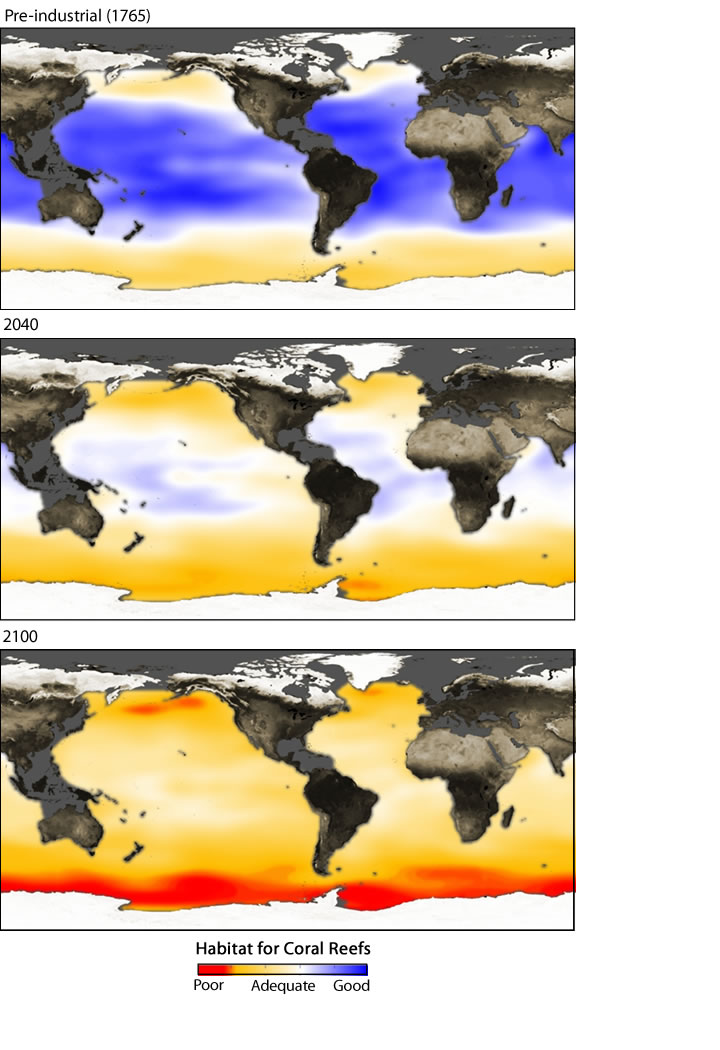Ocean Acidification: The Other Carbon Problem
Details
Over the past 150 years, the amount of carbon dioxide in the atmosphere has been increasing over time due to human emissions. As a result, the ocean is absorbing increasing amounts of carbon dioxide from the air. However, as carbon dioxide enters the ocean, it reacts with water to form carbonic acid. Subsequent chemical reactions end up reducing the amount of calcium carbonate—a component in the skeletons of many organisms such as corals, lobsters, clams, and pteropods. Without calcium carbonate, these organisms cannot properly grown and reproduce.
The three maps show model data of how the availability of calcium carbonate is predicted to decrease over the next century at a depth of 10 meters in the ocean—where most corals occur. Blue indicates surface waters are sufficiently saturated with calcium carbonate; organisms have enough material to build their protective shells. Areas that are deep red are expected to be sufficiently acidic to dissolve shell-building organisms. Before the Industrial Revolution, most areas of the ocean had enough calcium carbonate to support coral and other organisms. However, all areas are predicted to decline by the year 2100 if carbon dioxide in the atmosphere (and therefore the ocean) continues to increase throughout the next century. If human emissions of carbon dioxide are stabilized, the worst consequences of these dire predictions could be avoided.
References
Orr, J.C. et al. (2005), Anthropogenic ocean acidification over the twenty-first century and its impact on calcifying organisms, Nature, 437, 681-686.
Images adapted from an animation courtesy of the NOAA Environmental Visualization Laboratory
